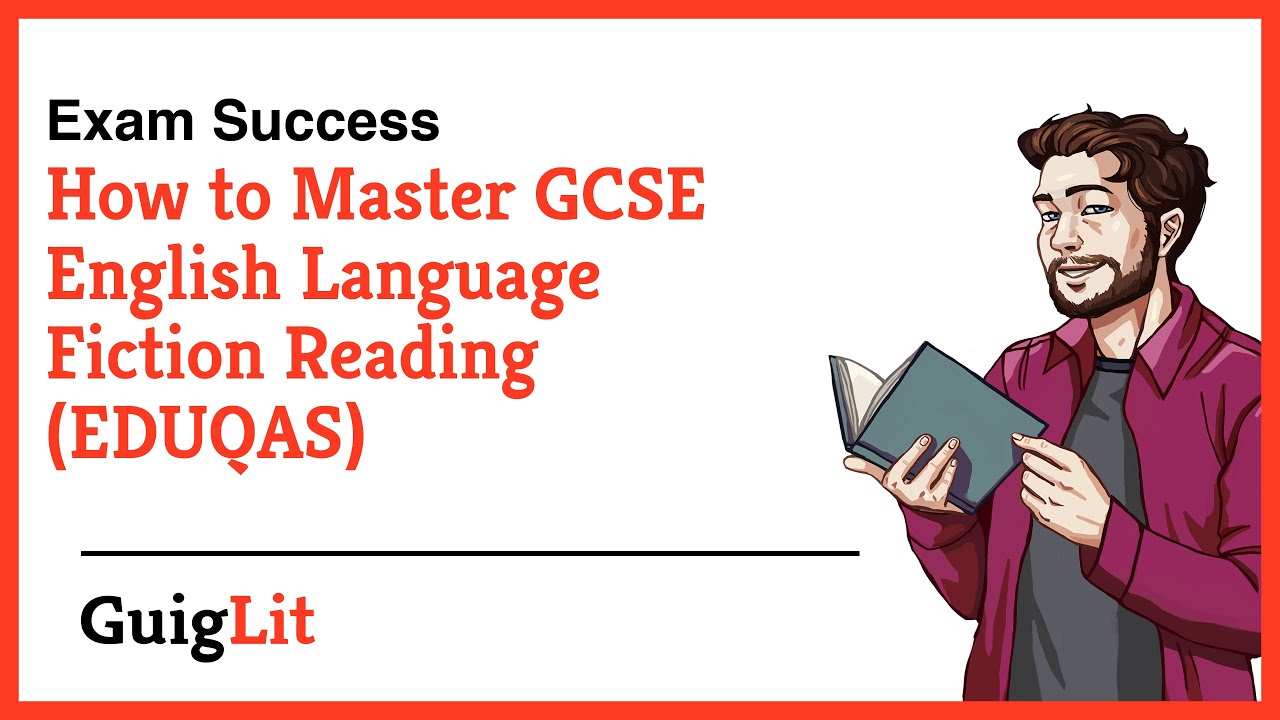iGCSE First Language English - The Writer's Effect: MY TOP 5 TIPS!
Summary
TLDRIn this video, an English teacher provides five essential tips for succeeding in the GCSE first language English exam, focusing on the writer’s effect question. Key advice includes careful reading of the paragraphs, identifying powerful images such as metaphors or similes, making multiple inferences, organizing your writing effectively, and starting each paragraph with an overview sentence. The teacher emphasizes the importance of structure, analysis, and organization to achieve higher marks. Viewers are encouraged to check previous videos for more detailed insights.
Takeaways
- 📚 The video is focused on helping students prepare for their GCSE English first language exam.
- 💡 The speaker emphasizes reviewing previous videos for mastering core skills essential for the exam.
- 📝 Tip 1: Carefully read the directed paragraphs to understand the writer's intent and the overall effect of each paragraph.
- 🔍 Tip 2: Highlight three powerful images in each paragraph, such as metaphors or similes, for meaningful analysis.
- ✍️ Tip 3: Write two to three comments per image, aiming to explore different shades of meaning for higher marks.
- 📐 Tip 4: Organize your response well, using quotations effectively and appropriate discourse markers to link ideas.
- 🖋️ Tip 5: Begin each paragraph with the sentence starter: 'The overall effect of the language creates an image of...' to demonstrate a clear understanding of the writer's intent.
- 🎥 The speaker has covered similar topics in previous videos, including more details on how to structure responses.
- 📈 The video offers practical strategies for summarizing and analyzing images in language for the writer’s effect question.
- 🗒️ A future video will focus on directed writing questions, offering tips on the most challenging aspects of the exam.
Q & A
What is the primary focus of the video?
-The primary focus of the video is to provide tips on how to succeed in answering the writer's effect question in the GCSE first language English exam.
What should students do before highlighting anything in the text?
-Students should carefully read the paragraphs they are directed to in order to understand the overall effect the writer is trying to achieve.
Why is it important to understand the overall effect of each paragraph?
-It's important because analyzing the wrong effect could lead to unfocused responses that do not effectively address what the writer is trying to achieve.
What does the teacher recommend highlighting in each paragraph?
-The teacher recommends highlighting the three most powerful images in each paragraph, which could include metaphors, similes, or personification.
Why is it important to choose striking images when analyzing the writer’s effect?
-Choosing striking images allows students to explore the writer’s language more deeply, leading to more meaningful and focused analysis.
How many comments should students aim to make per image?
-Students should aim to write two to three comments about each image to fully explore different shades of meaning.
What happens if students slightly exceed the word count when exploring multiple meanings?
-Exceeding the word count slightly is acceptable if it helps students explore different shades of meaning, which can result in a higher mark.
How should students structure their paragraphs for the writer’s effect question?
-Students should ensure their paragraphs are well-organized, use quotations effectively, and link ideas with appropriate discourse markers, even though there are no specific writing marks allocated.
What sentence starter does the teacher recommend for each paragraph?
-The teacher recommends starting each paragraph with the sentence, 'The overall effect of the language creates an image of...' to demonstrate a clear understanding of the writer's intent.
Why does starting a paragraph with 'The overall effect of the language creates an image of...' help students?
-This sentence starter helps students focus on the task and shows the examiners that they understand the purpose and effect of the language in the text.
Outlines

Этот раздел доступен только подписчикам платных тарифов. Пожалуйста, перейдите на платный тариф для доступа.
Перейти на платный тарифMindmap

Этот раздел доступен только подписчикам платных тарифов. Пожалуйста, перейдите на платный тариф для доступа.
Перейти на платный тарифKeywords

Этот раздел доступен только подписчикам платных тарифов. Пожалуйста, перейдите на платный тариф для доступа.
Перейти на платный тарифHighlights

Этот раздел доступен только подписчикам платных тарифов. Пожалуйста, перейдите на платный тариф для доступа.
Перейти на платный тарифTranscripts

Этот раздел доступен только подписчикам платных тарифов. Пожалуйста, перейдите на платный тариф для доступа.
Перейти на платный тарифПосмотреть больше похожих видео

iGCSE First Language English - Directed Writing: MY TOP 5 TIPS!

Tips for First Language English (0500)✨| IGCSE O level, How I studied📚

Spotlight on GCSE English Language: Paper 2 Question 5

How To Pass The GCSE English Language Paper 1 2024 Exams: Walkthrough, Timings & What Examiners Want

IGCSE First Language English - THE WRITER'S EFFECT *TOP BAND RESPONSE*

How to MASTER GCSE English Language Fiction Reading (Paper 1A - EDUQAS)
5.0 / 5 (0 votes)
